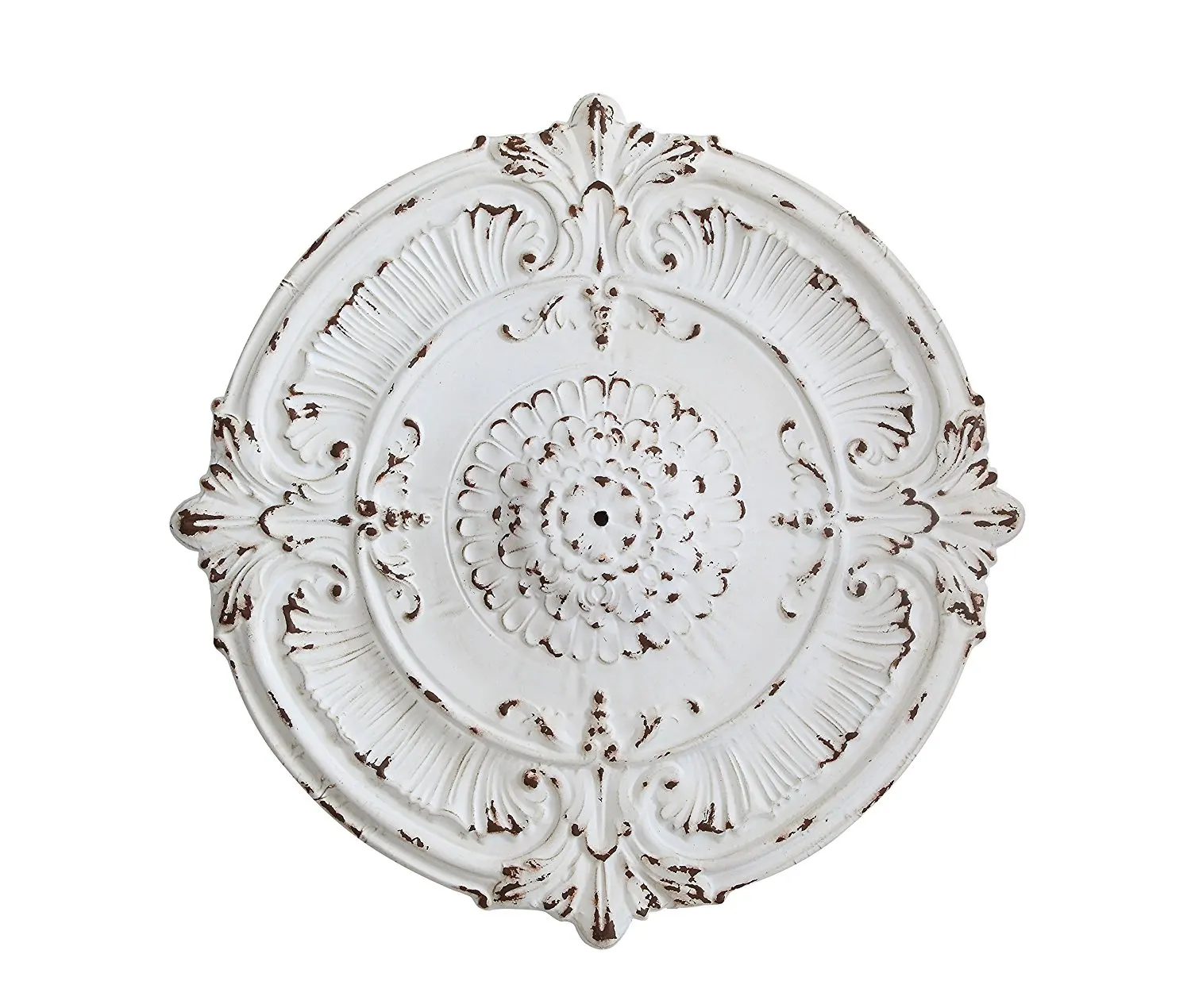

Or with “Jacobean” plaster featuring intricate strapwork. Tudor Revival houses had ceilings with heavy beams, Wood coffers, colored stains, painted decoration, and stenciling on or between beams were all popular treatments. In fact, there was a revival of ceiling decoration for Spanish Revival and Beaux Arts homes. Ceilings were not universally monochromatic in this period (as they were in Colonial Revival homes before and after). Many walls and the occasional ceiling were troweled with rough or textured plaster, to give an impression of age.
#Plaster chandelier medallion how to
Read How To Decorate with Ceiling MedallionsĪfter the First World War, European-influenced Romantic Revival house styles were built in the growing suburbs. Depending on the wood species (commonly pine or fir), you may choose to stain and seal, or prime and paint your ceiling, or finish it with orange shellac-Ī wonderful look on fir. Beadboard (aka tongue-and-groove or car siding) was made from scraps of lumber milled with a thin ridge or tongue on one edge and a corresponding groove on the opposite. The Painting Room sports refurbished beadboard wainscoting this section of the room highlights Winslow Homer’s career as an illustrator.Ĭommon by the turn of the 20th century, beadboard started out as an inexpensive and easily installed finish for informal rooms like kitchens, for porch ceilings, stables, and train stations. Complementary ceiling fill papers were light in tone and favored “natural” hues, such as limestone and sand colors accented with eggplant, earthy amber, and a soft olive green. In other fine rooms, the ceiling treatment played off the frieze, picking up its colors or repeating a motif. The spaces between beams might be treated with soft color, a burlap paper, or a border stencil. Public rooms, particularly in Arts & Crafts and English Tudor houses, often had beams-stenciled or with chamfers picked out in color. The ceiling was still important between 19.
#Plaster chandelier medallion full
Full embellishment would include a border or two, corner treatments, a center rosette, and a field-done in paper, freehand painting, stenciled decoration, or a combination of those.Īn example of a beautiful, decorative metal ceiling. In general, the higher the ceiling, the more elaborate the decoration. At its simplest, the ceiling may have been painted white tinted with a bit of the wall color, with a stripe around the perimeter, and maybe tiny corner fans. Faced with ceiling heights of 9′ or more on the main floor, decorators always considered the ceiling along with the walls. Stencils appeared early on, but the late 19th-century Victorian era was the heyday of the embellished ceiling. Throughout decorating history, even residential ceilings were embellished with color, striping, cast-plaster ornaments, corner fans, borders, specialty papers, and murals. Any treatment it’s given will stay relatively pristine in these days of smokeless heating.

For a cohesive scheme, especially one grounded in history, don’t overlook the ceiling. Standard today is flat drywall painted (what else?) ‘Ceiling White’. Old houses may once have had decorated ceilings, but most of those have been painted over.


 0 kommentar(er)
0 kommentar(er)
